Get Started
A step by step guide to help you make your first http requests using the Podium API
The Podium API utilizes REST framework to allow you to integrate your app with the Podium platform. This guide will help you get started.
To facilitate your application development, below are resources that will help you understand and navigate through Podium API:
Step 1 : Request access to the Developer Portal
The Developer Portal is where you will create OAuth Applications and get App credentials that will allow you to make successful HTTP requests to Podium’s API.
Developer Account Application
In order to develop Podium Applications, you will need to apply for a Developer Account at developer.podium.com. Once you've signed up, we'll take a few days to review your application. Once approved, we'll send a welcome email to the email address you provided.
Step 2: Create an app on the Podium Developer Portal
Your OAuth applications will allow you to access the Podium API. You will generate unique credentials that will help during your development. To create an OAuth App:
- Login using your developer account
- Go to Dashboard
- Select Create App
- Follow the screen steps
The name of your apps can be changed at a later time, but you will be required to enter a name at the time of app creation.
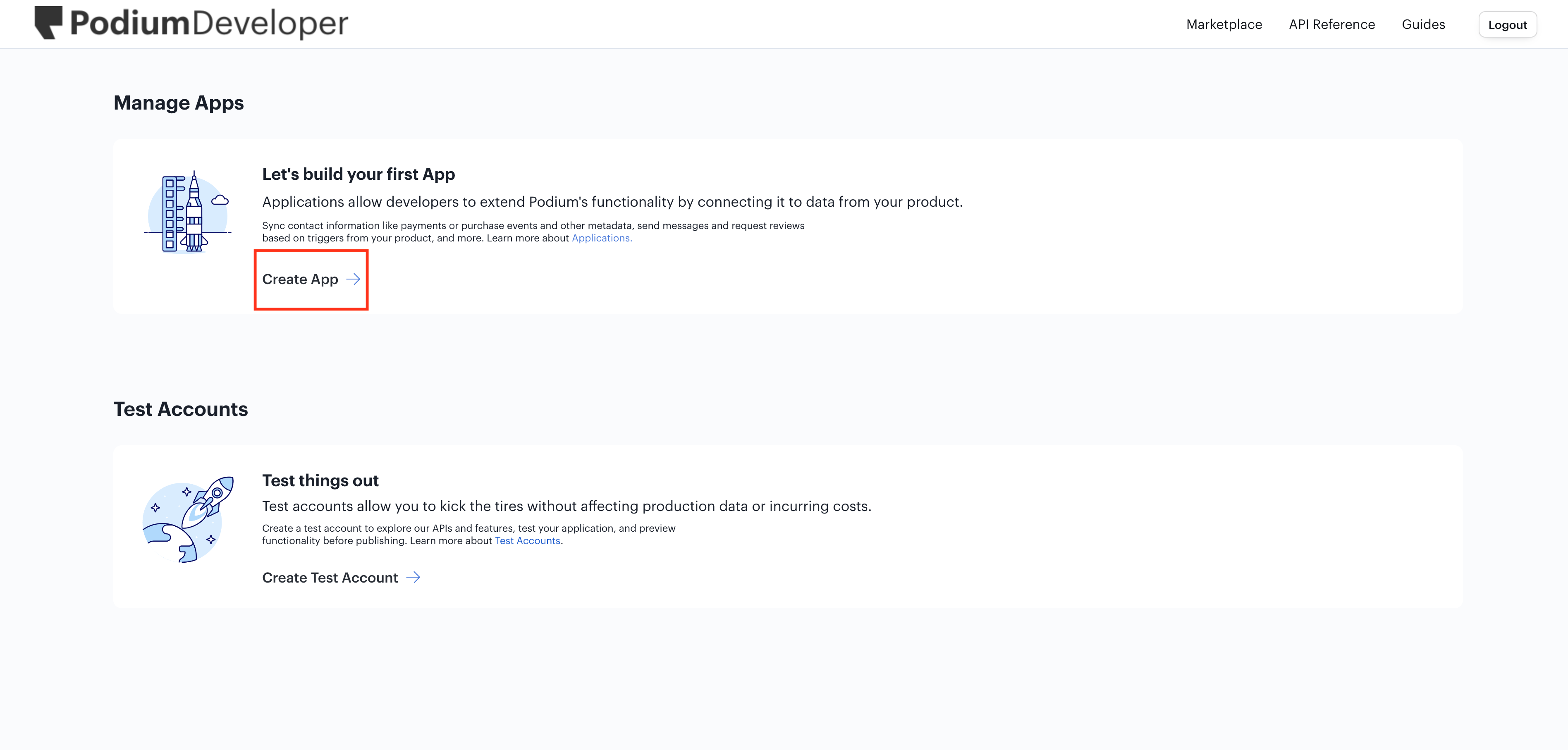
The two "Create App" buttons
Step 3: Define App Scopes & get app credentials
Once your app has been created, select the OAuth option on the side menu. To set up your app icon, redirect URL and scopes.

The OAuth tab
Podium uses OAuth 2.0, to allow your app to access Podium API on behalf of other Podium users. You can learn more about our authentication by following the guides below.
Note: When setting up scopes please use the least privilege principle, and only select the scopes needed for your app to complete its tasks.
Save your changes to generate your app credentials.
Please save the generated Client ID and Client Secret. The Client Secret can not be retrieved once you leave the page, so save it for your own records and reference later. You can regenerate a Client Secret but that will not revoke existing OAuth tokens.
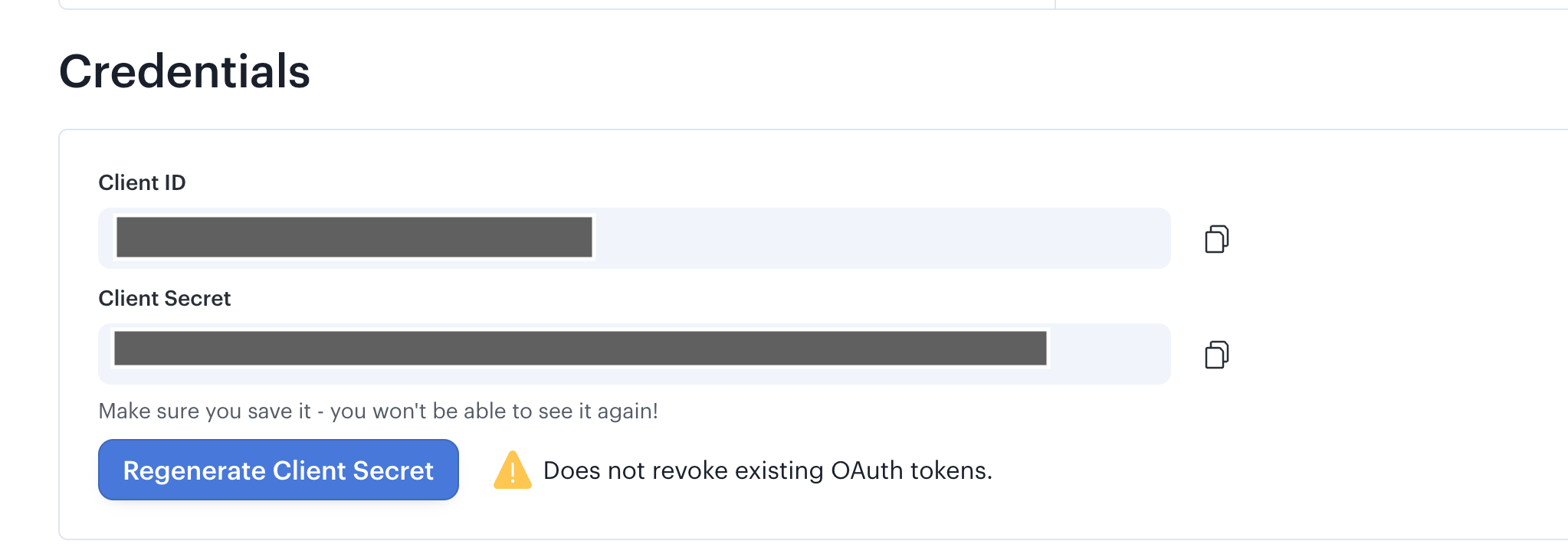
Step 4: Request test organization and location access
In order to make API requests your app needs to be authorized via OAuth 2.0 by a Podium Platform User. If you already have a Podium account, you can authenticate using a user from that organization. If you do not have access to a Podium account, you can contact our sales team here.
If you are working on-behalf of a Podium User that does have Podium Platform access (ie You are a contractor working for Company 123), we would recommend that you request a User from that Organization to go through the OAuth 2.0 authentication flow with you and your OAuth 2.0 application.
Step 5: OAuth app authorization setup and testing
Once you have an account, you will need to go through the OAuth authorization flow to grant your app access to an organization on behalf of an authorized Podium Platform User. You can test our flow using Postman to better help you with your development.
- Download the latest Postman app. Alternatively you can use Postman web
- Create a new request and select the Authorization tab
- Select Type OAuth 2.0
- For the Auth URL: https://api.podium.com/oauth/authorize
- For the Access Token URL: https://api.podium.com/oauth/token
- Enter the the Client ID and Client Secret generated from your app
- Enter the scopes to request access. Note: for multiple scopes, separate them by a single space.
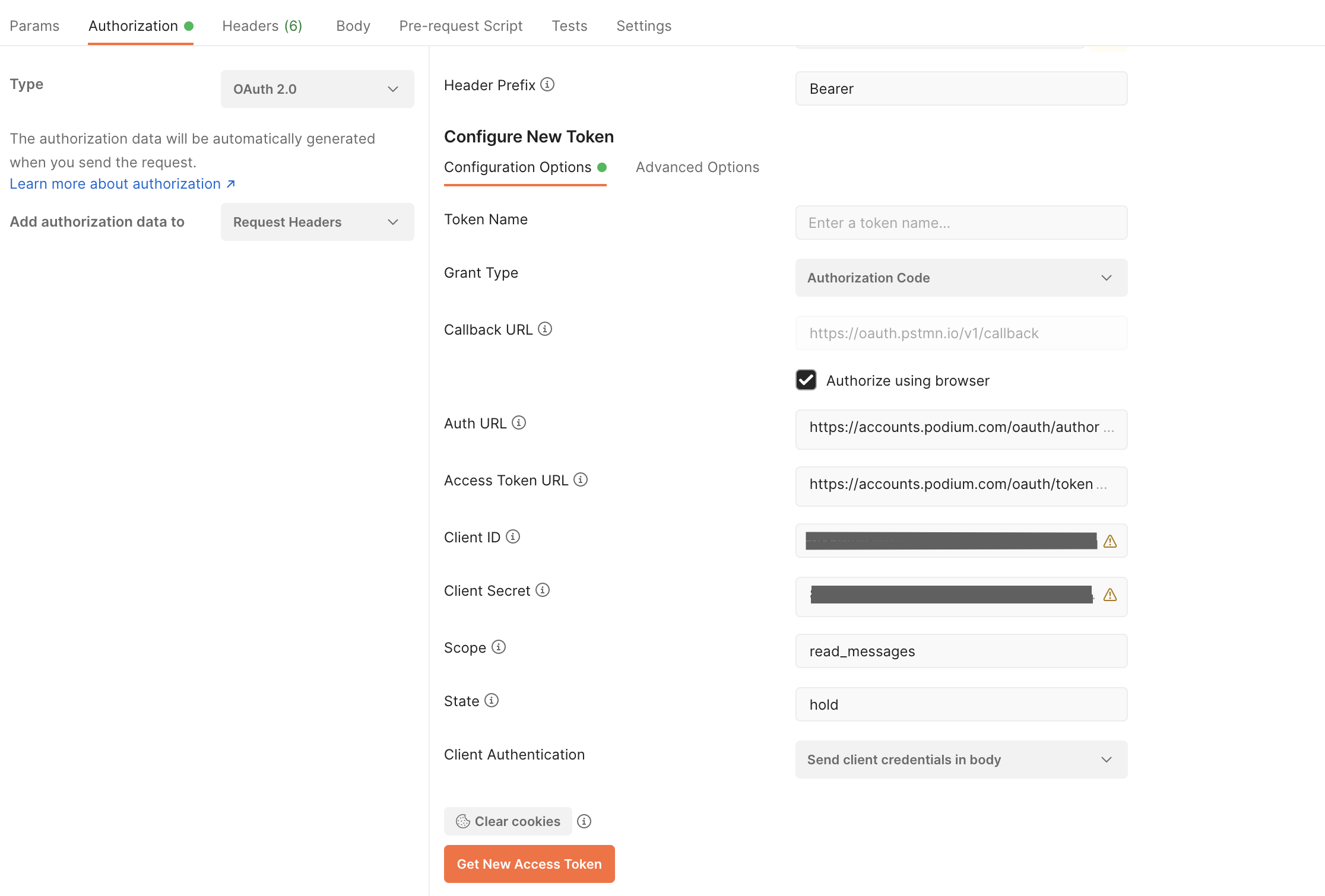
Click "Sign In."
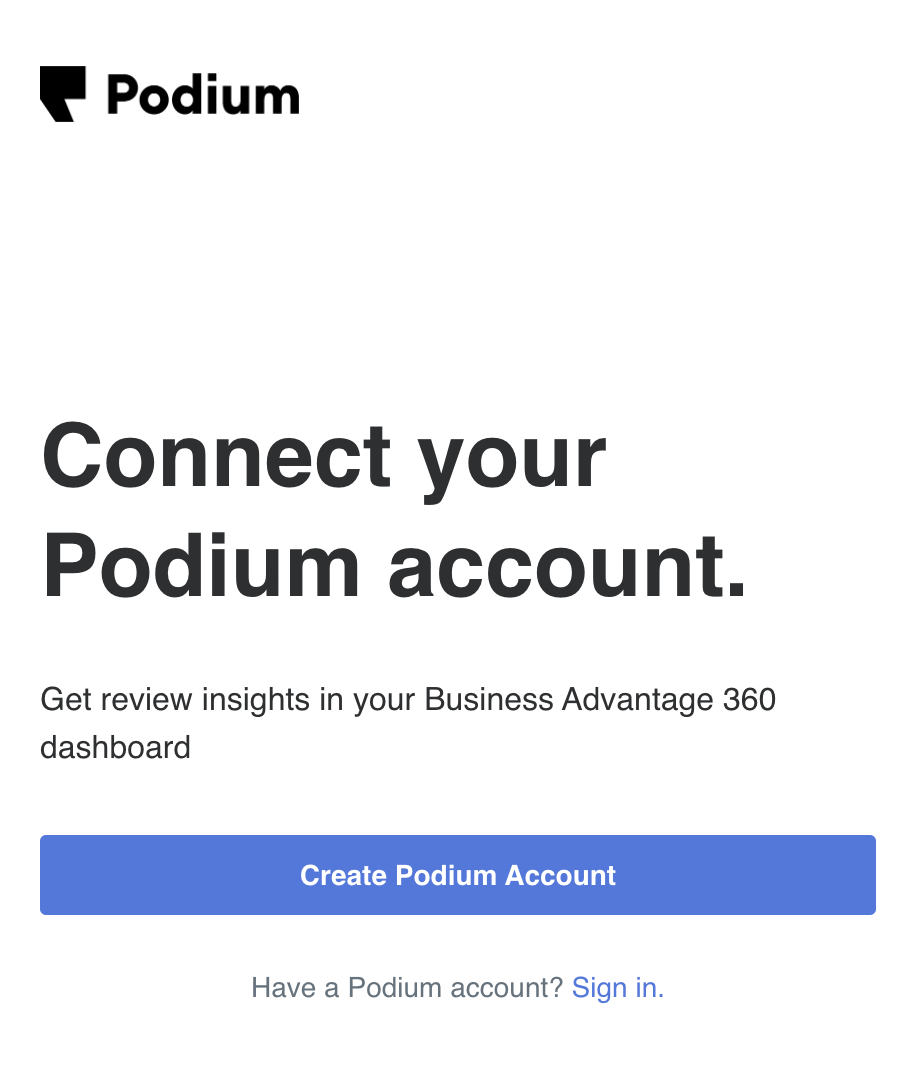
When you click Get New Access Token, Postman will open a tab/window that will initiate the OAuth flow
Sign in using the credentials from the account in Step 4.
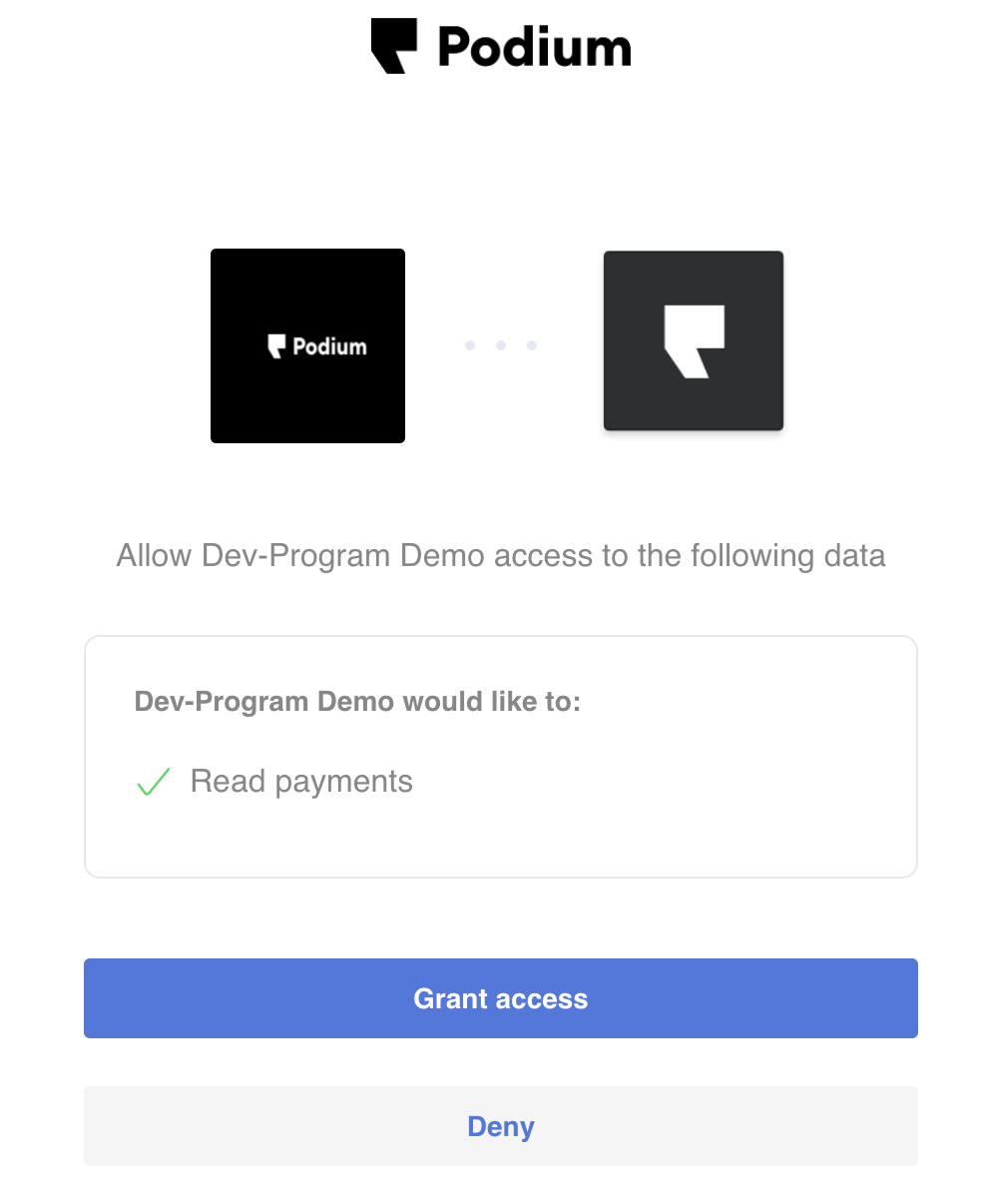
You will be prompted to grant you app access to the scopes you requested.
Step 6: Make your first API request
Once you've successfully granted access to your app, you will be able to make your HTTP requests.
Below is an example of a GET HTTP request to retrieve a list of all locations for a given organization.
https://api.podium.com/v4/locations

Check our API reference page for detailed explanation of our endpoints
Updated 10 months ago
